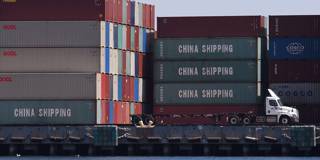Globalization previously made it easier for major central banks to pursue and maintain low inflation. Deglobalization risks having the opposite effect, and if this process continues unchecked, monetary policy may need to be tightened more than would otherwise be the case.
NEW YORK/HONG KONG – The return of high inflation in many developed economies seems to have surprised central banks and has quickly become people’s leading economic worry. While monetary tightening is necessary, the role of structural factors warrants attention, too. Specifically, besides pandemic-related supply-chain disruptions and the energy and food-price shocks amplified by the Ukraine war, policymakers must also acknowledge more explicitly the inflationary consequences of deglobalization.
During the two decades before the 2008 global financial crisis, globalization seemed unstoppable. The volume of global trade increased more than twice as fast as world GDP, as liberalization of trade and investment in developing Asia, Latin America, and Central and Eastern Europe contributed to a boom in cross-border reallocation of production flows of final and intermediate goods.
The hyper-globalization of this period, and notably the integration of China into world trade and investment portfolios, helped to reduce inflationary pressures in developed economies. For example, when overall annual US inflation was hovering around 2%, goods inflation was often about -1%. While US import prices of manufactured goods from industrialized countries rose by 33% between 1990 and 2008, prices of goods from developing countries increased by a mere 3.4%. Furthermore, the smallest price increases were for products imported largely from China.

NEW YORK/HONG KONG – The return of high inflation in many developed economies seems to have surprised central banks and has quickly become people’s leading economic worry. While monetary tightening is necessary, the role of structural factors warrants attention, too. Specifically, besides pandemic-related supply-chain disruptions and the energy and food-price shocks amplified by the Ukraine war, policymakers must also acknowledge more explicitly the inflationary consequences of deglobalization.
During the two decades before the 2008 global financial crisis, globalization seemed unstoppable. The volume of global trade increased more than twice as fast as world GDP, as liberalization of trade and investment in developing Asia, Latin America, and Central and Eastern Europe contributed to a boom in cross-border reallocation of production flows of final and intermediate goods.
The hyper-globalization of this period, and notably the integration of China into world trade and investment portfolios, helped to reduce inflationary pressures in developed economies. For example, when overall annual US inflation was hovering around 2%, goods inflation was often about -1%. While US import prices of manufactured goods from industrialized countries rose by 33% between 1990 and 2008, prices of goods from developing countries increased by a mere 3.4%. Furthermore, the smallest price increases were for products imported largely from China.